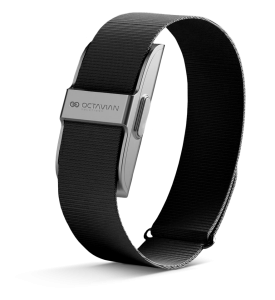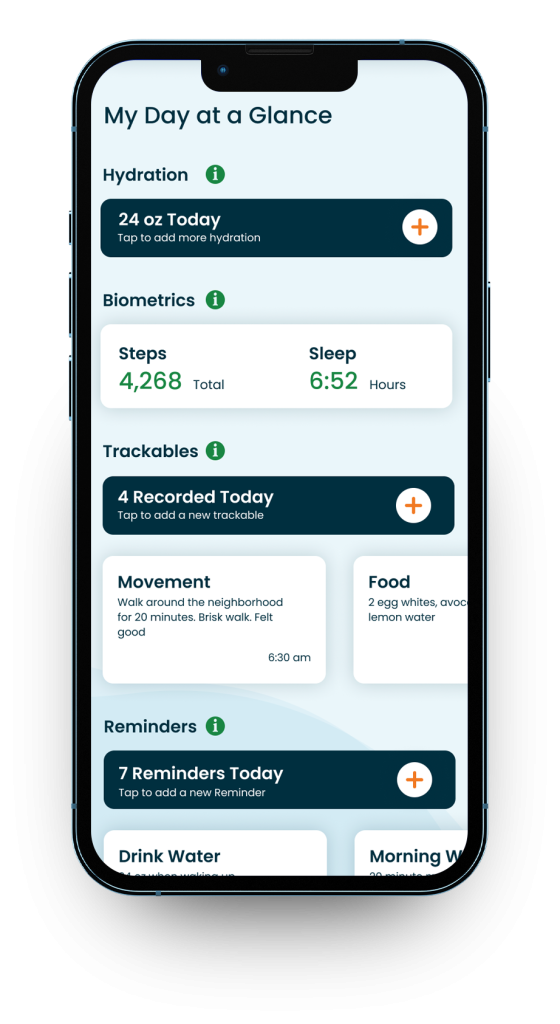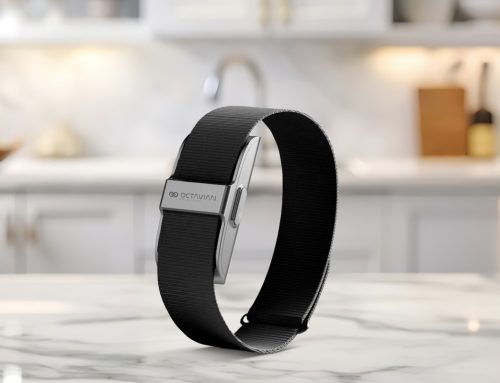In today’s health-conscious world, wearable devices have become more than just fashionable accessories—they are powerful tools that offer valuable insights into our well-being. Let’s explore how these devices can support blood sugar management, particularly for individuals living with diabetes, prediabetes, or insulin resistance.
Wearable Wisdom: What’s the Big Deal?

Wearable technology—such as smartwatches and fitness trackers—collects extensive data about your body, including heart rate, physical activity, sleep patterns, heart rate variability (HRV), and stress levels. By continuously monitoring these metrics, wearables provide a comprehensive overview of your health. Let’s explore how these insights can support effective blood sugar management.
Step Up Your Game: Physical Activity
Regular movement is essential for managing blood sugar levels. The American Diabetes Association recommends at least 150 minutes of physical activity per week (1). Wearable devices can support this goal by tracking your daily activity and step count. By reviewing this data, you and your HealthCoach can identify patterns and make adjustments to help you stay on track.
For example, if your device shows that you’re not consistently hitting your step target, you can set gentle reminders to take short walks throughout the day. Increased physical activity boosts insulin sensitivity, which contributes to better blood sugar control (2). Plus, a higher step count is associated with lower all-cause mortality (4)!
What this could look like for you:
- Collaborate with your HealthCoach to set a 2×2 movement goal. You might be surprised at how motivating it is to accomplish a goal just twice a week!
- Use your Bioband daily to monitor your steps. Try comparing your step data with your blood sugar levels—it could reveal helpful patterns that allow you to fine-tune your routine for even better results.
Sleep Like a Baby: Optimize Sleep Quality
 Getting enough sleep is crucial for keeping your blood sugar levels steady. Wearable devices can support you by tracking your sleep patterns—such as how long you sleep and how restful that sleep is. With greater insight into your sleep habits, you and your HealthCoach or Tula Nurse can make small adjustments to improve your rest, like establishing a consistent bedtime or reducing screen time before bed. Quality sleep helps regulate the hormones that influence glucose levels, making it easier to maintain blood sugar stability.
Getting enough sleep is crucial for keeping your blood sugar levels steady. Wearable devices can support you by tracking your sleep patterns—such as how long you sleep and how restful that sleep is. With greater insight into your sleep habits, you and your HealthCoach or Tula Nurse can make small adjustments to improve your rest, like establishing a consistent bedtime or reducing screen time before bed. Quality sleep helps regulate the hormones that influence glucose levels, making it easier to maintain blood sugar stability.
What this could look like for you:
- Sometimes a gentle reminder is all you need. Try setting prompts in your LiveTULA app to switch your phone to “sleep” or “do not disturb” mode. That way, you can ease into a calming bedtime routine—like reading a book, taking a bath, or winding down without blue light.
- Check your sleep data in the myTula app from your Bioband to see if you’re getting enough rest. If not, consider small changes like going to bed a bit earlier to help improve your sleep quality over time.
Heart-to-Heart: Understanding HRV
Heart Rate Variability (HRV) measures the variation in time between each heartbeat and reflects the health of your autonomic nervous system. A higher HRV is typically linked to better cardiovascular fitness and lower stress levels. Wearable devices that track HRV can give you valuable insights into how your body is handling stress and recovery—both of which directly affect your blood sugar levels.
By identifying periods when your HRV is lower than usual, you can take proactive steps to support your well-being. Techniques like meditation, deep breathing exercises, getting more whole food vitamin C to nourish your adrenals, or even incorporating gentle physical activity can help restore balance and support better blood sugar control (3).
What this could look like for you:
- If your wearable tracks HRV, try to get a sense of your personal baseline. When you notice it dipping below your usual range, take a moment to check in on your sleep, eating habits, physical activity, and stress levels. One of those areas might need a little more attention—and small changes can make a big difference.
- Use your HRV trends to spot patterns—like whether stressful meetings, skipped meals, or late nights are taking a toll. Over time, this can help you make more informed choices and build a routine that supports both your nervous system and your blood sugar.
Stress Less, Smile More: Manage Stress Effectively
A simple, intentional smile can go a long way. While many techniques to lower blood sugar may require time or money, this one is completely free! Try finding joy not because of your circumstances, but despite them. Discovering something to smile about or be grateful for each day can improve the quality of your daily life—and over time, lead to a more joyful and resilient outlook. Not only can this help boost your mood, but by reducing stress, it can also support better blood sugar management. Chronic stress elevates blood sugar levels due to the release of stress hormones like cortisol and the liver releasing stored glucose to fuel the body’s stress response. Some wearable devices even monitor stress levels through heart rate and HRV data. By recognizing moments of stress, you can take proactive steps to manage it—like practicing relaxation techniques, engaging in physical activity, or spending time in nature. Reducing stress helps stabilize blood sugar and supports overall health.
What this could look like for you:
- Give more hugs this week. If you’re not a touchy person, offer a smile instead. Spreading kindness to others can help cultivate self-kindness, too. Try smiling at yourself in the mirror—this simple act may actually reinforce feelings of happiness (5).
- Feeling overwhelmed by everything you “should” be doing? Grab a pen and paper and write it all down. Jotting down what’s on your mind can help you see what truly needs attention and what can wait. It also frees up mental space by getting your thoughts out of your head and onto paper, making room for calm and clarity.
“Knowledge is power,” and “what gets measured gets managed.” Take charge of your health journey with the help of wearable technology. By leveraging the data and insights these devices provide, you can better understand your body, reduce anxiety, and manage your blood sugar levels more effectively—all while supporting your overall well-being.
Sending Health Your Way!
The Tula Clinical Team
Austin MS, RDN, CSR, LDN, CD
Aubree RN, BSN
Tula Takeaways |
|---|
| 1. Step Up Your Activity: Aim to take 50 more steps each day this week than you did each day last week. You’d be surprised how easy it can be to sneak in extra steps—take the long way to get the mail, park farther from the entrance, or walk to a colleague’s office instead of sending a message. |
| 2. Simply Sip and Sleep: Improve your sleep quality by paying attention to what you sip—up to six hours before bed. Caffeine and alcohol can negatively affect your rest, while calming drinks like chamomile tea or tart cherry juice may support better sleep. Pair this with a consistent bedtime routine, less screen time an hour before bed, and a peaceful environment to help you wind down. |
| 3. Manage Stress Wisely: Use your wearable device to track stress indicators and recognize when you need to pause. Engage in activities like deep breathing, meditation, or spending time outdoors to reduce stress. Keeping stress in check helps support more stable blood sugar levels and overall health. |
The LIVE TULA blog is informational and not medical advice. Always consult your doctor for health concerns. LIVE TULA doesn’t endorse specific tests, products, or procedures. Use the information at your own risk and check the last update date. Consult your healthcare provider for personalized advice.






